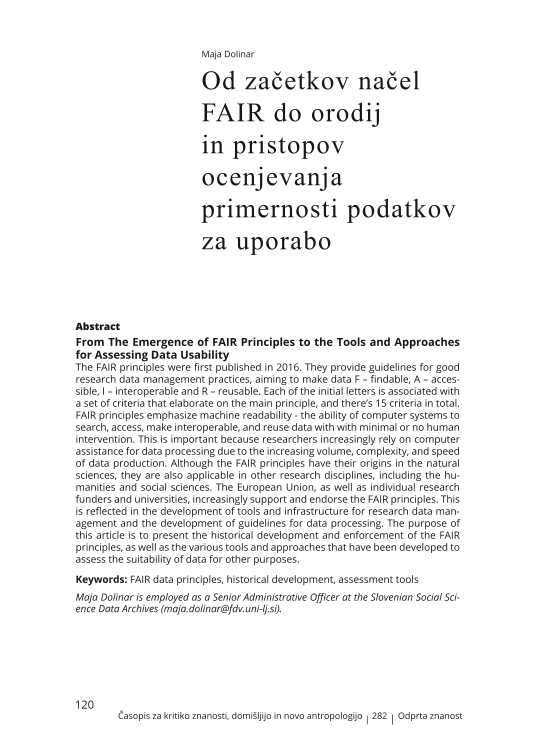The FAIR principles were first published in 2016. They provide guidelines for good research data management practices, aiming to make data F – findable, A – accessible, I – interoperable and R – reusable. Each of the initial letters is associated with a set of criteria that elaborate on the main principle, and there’s 15 criteria in total. FAIR principles emphasize machine readability -the ability of computer systems to search, access, make interoperable, and reuse data with with minimal or no human intervention. This is important because researchers increasingly rely on computer assistance for data processing due to the increasing volume, complexity, and speed of data production. Although the FAIR principles have their origins in the natural sciences, they are also applicable in other research disciplines, including the humanities and social sciences. The European Union, as well as individual research funders and universities, increasingly support and endorse the FAIR principles. This is reflected in the development of tools and infrastructure for research data management and the development of guidelines for data processing. The purpose of this article is to present the historical development and enforcement of the FAIR principles, as well as the various tools and approaches that have been developed to assess the suitability of data for other purposes.




